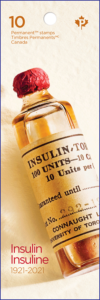Issue date: 15 April
Updated 15 April with better images:
[press release]
Stamp marks 100th anniversary of the discovery of insulin
Canadian dream team’s groundbreaking research has saved millions of lives
TORONTO, Ontario – Canada Post released a stamp today that marks the 100th anniversary of the discovery of insulin in a Department of Physiology laboratory at the 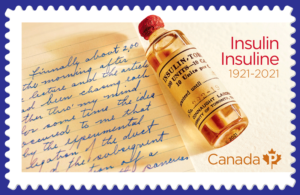 University of Toronto, one of the world’s most important medical breakthroughs.
University of Toronto, one of the world’s most important medical breakthroughs.
In 1921, the groundbreaking discovery of Frederick Banting, Charles Best, James Collip and John Macleod placed Canada’s medical researchers on the world stage.
Under Macleod’s oversight, Banting and Best used a pancreatic extract to successfully reduce blood sugar levels in a dog. With the help of biochemist James Collip, they refined the extract now known as insulin before testing it on humans in 1922 then putting it into mass production.
By the end of 1923, insulin had become widely available and Banting and Macleod had jointly been awarded the Nobel Prize in Physiology or Medicine for their work; they chose to share the prize money with Best and Collip. Since then, Canadians have contributed to a long list of medical advancements – in stem cell research, open-heart surgery, genetics and disease.
Before the discovery of insulin, being diagnosed with what is now known as type 1 diabetes was considered a death sentence. The only way to treat the disease was through an extremely restricted diet that only briefly extended a person’s life. A century later, millions of people with the disease continue to be treated with life-saving insulin.
The legacy of that dream team’s early medical research endures at the University of Toronto, where researchers continue to study progressive treatments in type 1 and type 2 diabetes.
Yesterday, in collaboration with the University of Toronto’s Banting & Best Diabetes Centre, its Department of Medicine in the Temerty Faculty of Medicine and Diabetes Action
Canada, this milestone was acknowledged and the new stamp design unveiled at 100 Years of Insulin: Celebrating Its Impact on Our Lives. The virtual event featured stories of people living with diabetes and specialists in the field. The stamp unveiling was done from the Banting House National Historic Site of Canada in the room where Banting first had the idea that led to the discovery of insulin.
Designed by Subplot Design Inc. of Vancouver, the stamp features the image of an early insulin vial resting on an excerpt of Banting’s unpublished memoir. It reflects the very moment he conceived the idea that set in motion events leading to the discovery of insulin. Photos were taken by Seth Stevenson, a Toronto-based photographer.
The Permanent™ stamp is now available in booklets of 10 and can be purchased at canadapost.ca/shop [direct link here] and postal outlets across Canada. There is also an Official First Day Cover cancelled in Toronto [shown below]. 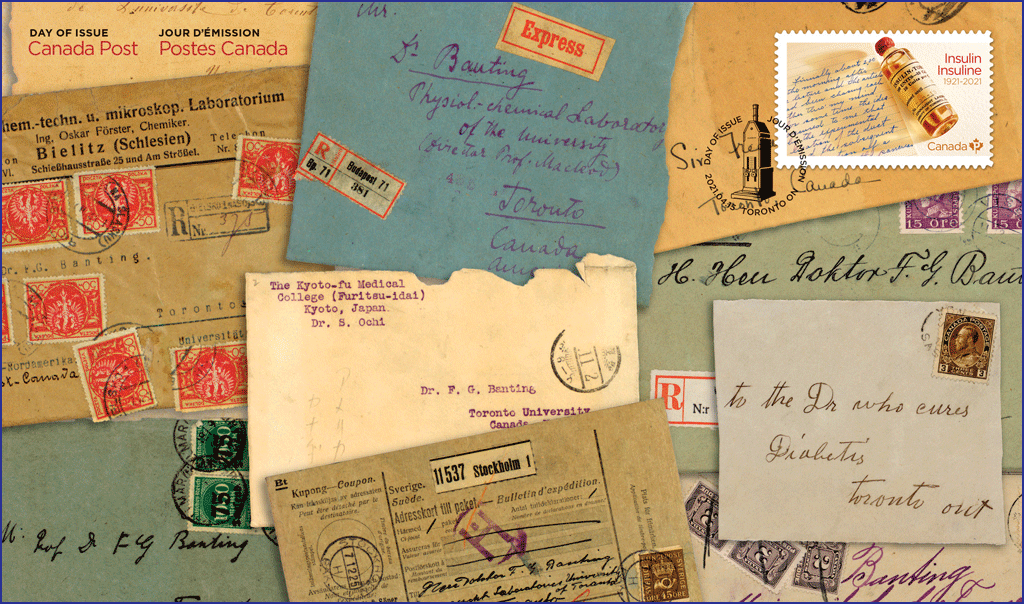
Canada Post’s 17-second video:
[en Francais pour les médias d’information]
Un timbre souligne le centenaire de la découverte de l’insuline
Les recherches avant-gardistes d’une équipe canadienne exceptionnelle sauvent des millions de vies
TORONTO, Ontario – Postes Canada a émis aujourd’hui un timbre qui marque le 100e anniversaire de la découverte de l’insuline dans un laboratoire du Département de  physiologie à l’Université de Toronto, l’une des plus grandes percées médicales dans le monde.
physiologie à l’Université de Toronto, l’une des plus grandes percées médicales dans le monde.
Grâce à la découverte extraordinaire de Frederick Banting, Charles Best, James Collip et John Macleod en 1921, la communauté canadienne de la recherche médicale prend les devants de la scène internationale.
Sous la supervision de John Macleod, Frederick Banting et Charles Best utilisent un extrait pancréatique qui réduit le taux de glycémie d’un chien. Avec l’aide du biochimiste James Collip, ils raffinent l’extrait, plus tard nommé insuline, avant de le tester sur les humains en 1922, puis de le produire en grande quantité.
Avant la fin de 1923, l’insuline est largement accessible, et Frederick Banting et John Macleod reçoivent le prix Nobel de physiologie ou médecine, dont ils décident de partager 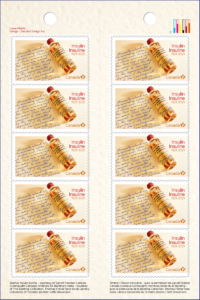 la bourse avec Charles Best et James Collip. Depuis, les Canadiens ont contribué à allonger la liste des progrès de la médecine, dont la recherche sur les cellules souches, les chirurgies à cœur ouvert, la génétique et les maladies.
la bourse avec Charles Best et James Collip. Depuis, les Canadiens ont contribué à allonger la liste des progrès de la médecine, dont la recherche sur les cellules souches, les chirurgies à cœur ouvert, la génétique et les maladies.
Avant la découverte de l’insuline, une personne qui recevait un diagnostic de ce qu’on appelle aujourd’hui le diabète de type 1 était pratiquement condamnée à mort. La maladie n’était traitable qu’à l’aide d’une diète très stricte qui ne faisait que prolonger brièvement la vie. Un siècle plus tard, l’insuline continue de sauver la vie de millions de personnes diabétiques.
Les résultats des premières recherches médicales de cette équipe exceptionnelle portent encore leurs fruits à l’Université de Toronto, où l’étude de traitements progressifs pour le diabète de type 1 et de type 2 se poursuit.
Hier, en collaboration avec le Département de médecine de la Temerty Faculty of Medicine du Banting & Best Diabetes Centre de l’Université de Toronto et Action diabète Canada,
ce jalon important a été souligné et le motif du nouveau timbre a été dévoilé dans le cadre de l’événement virtuel 100 Years of Insulin: Celebrating Its Impact on Our Lives, où ont discuté des personnes qui vivent avec le diabète et des spécialistes dans le domaine. C’est dans le lieu historique national du Canada de la Maison-Banting, dans la chambre où Frederick Banting a d’abord eu l’idée qui a mené à la découverte de l’insuline, que le dévoilement du timbre a eu lieu.
Conçu par Subplot Design Inc., de Vancouver, le timbre illustre un ancien flacon d’insuline qui repose sur un extrait des mémoires non publiés de Frederick Banting. L’image représente le moment précis où a germé l’idée qui a mis en branle les événements menant à la découverte de l’insuline. Les photos ont été prises par le photographe torontois Seth Stevenson.  Le timbre PermanentMC est offert en carnet de 10 à [direct] et dans les comptoirs postaux partout au pays. Le pli Premier Jour officiel porte la mention « Toronto ».
Le timbre PermanentMC est offert en carnet de 10 à [direct] et dans les comptoirs postaux partout au pays. Le pli Premier Jour officiel porte la mention « Toronto ».
From Details magazine:
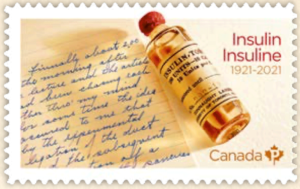 On the brink of death from diabetes, 13-year-old Leonard Thompson was skeletal. The starvation diet he had been following – the only known treatment for diabetes in the early 20th century – had reduced him to less than 29 kilograms (65 pounds). As he lay in critical condition in Toronto General Hospital in January 1922, his father gave doctors permission to try an experimental drug developed by University of Toronto researchers that had never been injected into humans. Although Leonard had an adverse reaction to the initial formula, a second round of injections – administered after further refinements – saved his life. From these early trials came the medical breakthrough now known as insulin. The
On the brink of death from diabetes, 13-year-old Leonard Thompson was skeletal. The starvation diet he had been following – the only known treatment for diabetes in the early 20th century – had reduced him to less than 29 kilograms (65 pounds). As he lay in critical condition in Toronto General Hospital in January 1922, his father gave doctors permission to try an experimental drug developed by University of Toronto researchers that had never been injected into humans. Although Leonard had an adverse reaction to the initial formula, a second round of injections – administered after further refinements – saved his life. From these early trials came the medical breakthrough now known as insulin. The 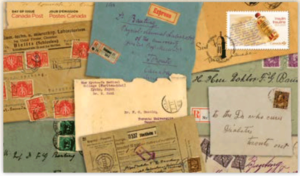 diagnosis of diabetes was no longer considered a death sentence.
diagnosis of diabetes was no longer considered a death sentence.
It was an early-morning epiphany that led Dr. Frederick Banting to this life-saving discovery. The achievement was a team effort, with the surgical approach of Dr. Banting, the critical input of research assistant Charles Best and visiting biochemist James Collip, and the advice, guidance and oversight of John Macleod, chair of the Physiology Department. The discovery of insulin – which earned Banting and Macleod the 1923 Nobel Prize in Physiology or Medicine – has saved and improved the lives of countless people with diabetes over the past century.

